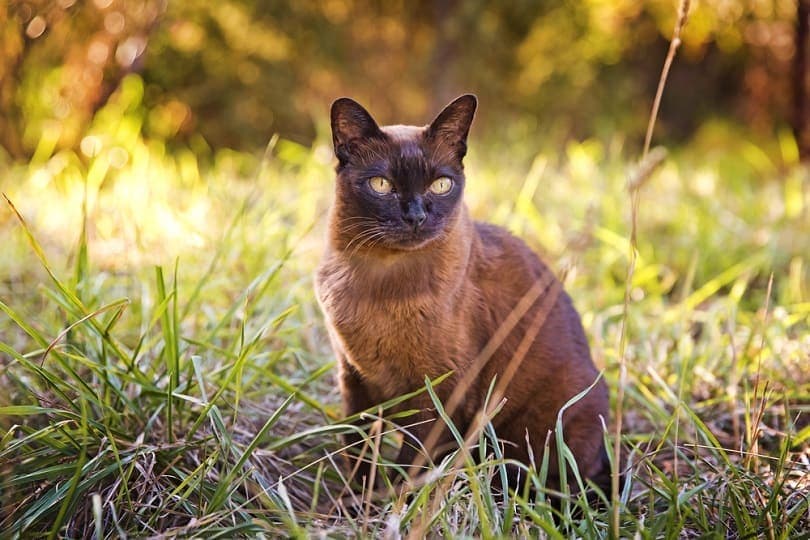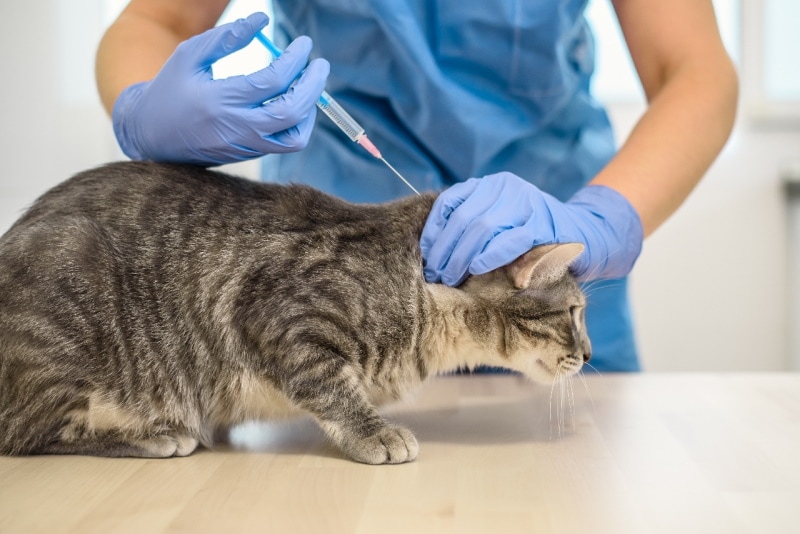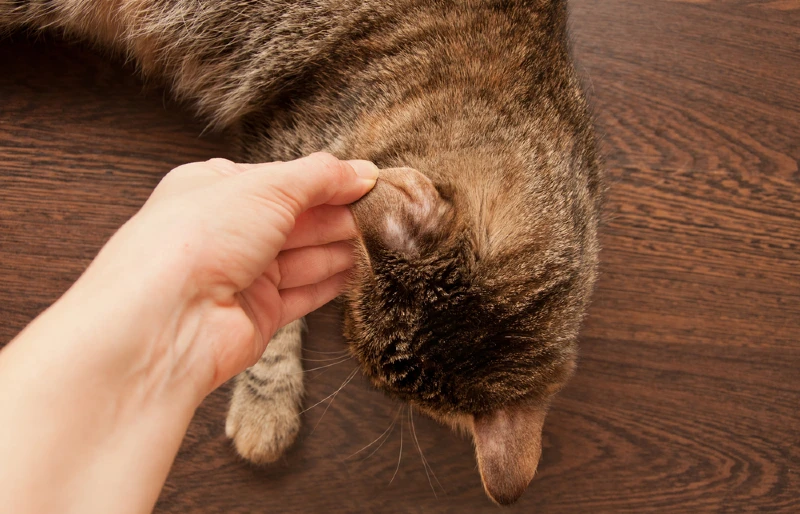5 Common Burmese Cat Health Problems (Vet-Approved)

Updated on

Burmese cats are always in demand. Known for their friendly, people-pleasing disposition and coppery brown coats, it’s not hard to see why some pet owners dream of owning one. Beautiful, intelligent, and friendly—these cats have it all. But if you’re considering adopting a rescue or tracking down a breeder, it’s important to be educated about the risks first. No cat can be guaranteed good health. But like most purebred cats, there are some health problems that are more common in Burmese cats than in the rest of the population. Here are five common health problems to keep an eye out for in your Burmese.
Top 5 Common Burmese Cat Health Problems
1. Separation Anxiety
Although separation anxiety isn’t a physical health problem, it can cause serious problems. Burmese cats tend to be outgoing, friendly, and very attached to their owners and that can sometimes turn into separation anxiety. Recent studies have shown that cats do form strong attachments to their owners, and that most cats have healthy, secure attachments. But if your cat experiences separation anxiety, she’ll likely hate the idea of you leaving the house or even her sight.
Prevention and Treatment
Training and ignoring attention-seeking behavior can be effective ways to minimize separation anxiety, as can keeping to a strict routine. In severe cases, medications can be prescribed to help manage anxiety.
One of the most common ways to prevent separation anxiety is to adopt two kittens together. By adopting siblings or two kittens at the same time, you’re likely to have cats with strong bonds to each other. If you already have one cat, adopting a second one isn’t recommended, though; bringing a stranger into your family often makes anxiety worse instead of better.

2. Diabetes Mellitus
Feline diabetes is a relatively common condition in cats caused by a combination of environmental and genetic factors. Burmese cats are prone to this condition, with some studies suggesting that they are at least four times as likely to develop diabetes mellitus than the average cat. This effect is mainly seen in European bloodlines, not American, but many owners still watch out for it. One of the most common symptoms of diabetes is excessive urination and sweet-smelling urine.
Prevention and Treatment
Even if your cat is genetically disposed to diabetes, you can reduce the chances of it developing by encouraging a healthy, balanced diet and exercise. If your cat develops diabetes, your vet might recommend treatment by diet control, medication, or both. Most cats with diabetes can live healthy, happy lives with proper medical care.
3. Oxalate Bladder Stones
Some Burmese cats are prone to developing Oxalate Bladder Stones. These stones form in your cat’s bladder because of an excess of calcium and oxalate in the bloodstream. They can cause significant pain while urinating and sometimes cut into the bladder, making urine appear bloody.
Prevention and Treatment
Dehydration is a factor that increases the chance of bladder stones, so ensuring your cat is getting plenty of liquids is important. Many cats don’t drink as much water as they should, so adding wet food or a wet topper to your cat’s meals can help. If your cat develops oxalate bladder stones, usually surgery is required to remove them. Afterwards, a low-calcium and low-oxalate prescription diet will help your cat to stay healthy and avoid further stone formation. In some cases, medication will be needed.

4. Feline Orofacial Pain Syndrome
Burmese cats are more prone to neuropathic pain disorders, the most common of which is Orofacial Pain Syndrome. Cats suffering from this syndrome experience heightened sensitivity around the face and mouth that causes severe pain despite a lack of physical injury. This syndrome is rare in all cat breeds but is more common in Burmese cats. You might notice your cat having difficulty eating, constantly moving her tongue or making chewing movements and showing other signs of pain.
Prevention and Treatment
This disease is often triggered by an oral injury, lesion, or eruption of teeth, so proper dental hygiene can minimize the chances of this disease. Stress can also be a factor in the syndrome. Because this syndrome is rare, treatment methods aren’t standardized. Some medications with analgesic properties might help control the symptoms. Symptoms may come and go with time. In severe cases of uncontrolled pain, your vet might recommend euthanasia as the most humane option.
5. Hypokalemia
Hypokalemia causes generalized muscle weakness due to low potassium levels. In most cases, the potassium levels aren’t caused by malnutrition but because the body has difficulties absorbing potassium and needs higher levels. Hypokalemic polymyopathy is an inherited trait in some Burmese cats. Hypokalemia can also be caused by other underlying problems such as kidney issues. It is the most common cause of general muscle weakness in cats and is more common in Burmese cats.
Prevention and Treatment
Although hypokalemia is scary, the good news is that it is easily treatable. In most cases, a potassium supplement can reverse hypokalemia, correcting for your cat’s lower absorption. In severe cases, an IV will be used to correct potassium levels. Because hypokalemia can be associated with other issues, your vet will likely check for other diseases that may be causing hypokalemia.

Last Thoughts
On the whole Burmese cats are relatively healthy, but when they do have health issues, they can be serious. There are some other, thankfully less common, conditions such as Head and Brain Deformity, Gangliosidosis, Flat Chested Kittens and Pica that some families of Burmese are prone to. Each of the issues discussed here has its own challenges to overcome, but luckily most Burmese cats with health issues can live happy lives with proper treatment. Education about what diseases to look out for is an important part of being a responsible pet owner, but don’t be too intimidated—most of the diseases here only affect a small fraction of Burmese cats.
Featured Image Credit: Ivanova N, Shutterstock













